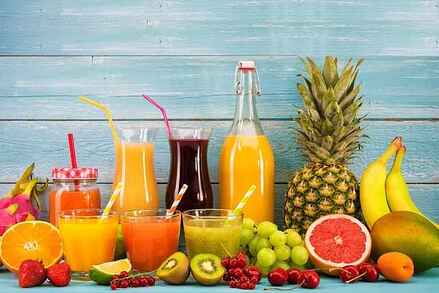Our bodies can remove potentially harmful substances. The body’s natural detoxification system includes the liver, kidneys, lungs, skin, digestive and lymphatic systems. However, it works effectively only when these organs are healthy and not overloaded with toxins.
Toxic substances exist in solid, vapor, and liquid forms. People are exposed to contaminants that exist in air, soil, water, dust, plants, food, etc. Gradually, the body gets exhausted from drugs, stress, environmental exposure, and an unhealthy lifestyle. Many harmful chemicals getting into our bodies through skin, inhalation, and ingestion. Accumulation of toxins in the body will cause illness.
Toxic chemicals exposure on health
Daily toxins exposure comes from contaminated food, household air pollution, cosmetic products, personal care products, drugs, occupational chemical exposure, environment, petrochemicals, etc.
Nowadays, chemical compounds are found in every person. According to CDC, over 400 environmental chemicals or their metabolites are found in human breast milk, blood, urine, serum, and meconium.
Scientific research conducted in the Netherlands in 2021 found that polymers from plastics were detected and quantified in human bloodstream. The amount of blood is approximately 7-10% of the body weight. Blood flows around the body, irrigates organs, and delivers oxygen and nutrients. Plastic particles may be carried to tissues and organs by bloodstream.
Data from the 2013–2014 National Health and Nutrition Examination Survey suggest that over 80% of the U.S. general population ≥ 6 years experienced recent exposure to glyphosate, the chemical ingredient in the most commonly used glyphosate-based herbicides.
As per the Toxic Substances Control Act (TSCA) chemical substantive inventory in the USA, the environment contains over 86,000 existing chemicals.
According to the Global Burden of Disease project, air pollution is the 5th leading mortality risk in the world and was responsible for 8.7% of deaths globally in 2017 (or 4.9 million premature deaths worldwide). Exposure to air pollution increases the risk of premature mortality from heart disease, stroke, and lung cancer.
Nowadays, chemical compounds are found in every person. According to CDC, over 400 environmental chemicals or their metabolites are found in human breast milk, blood, urine, serum, and meconium.
Scientific research conducted in the Netherlands in 2021 found that polymers from plastics were detected and quantified in human bloodstream. The amount of blood is approximately 7-10% of the body weight. Blood flows around the body, irrigates organs, and delivers oxygen and nutrients. Plastic particles may be carried to tissues and organs by bloodstream.
Data from the 2013–2014 National Health and Nutrition Examination Survey suggest that over 80% of the U.S. general population ≥ 6 years experienced recent exposure to glyphosate, the chemical ingredient in the most commonly used glyphosate-based herbicides.
As per the Toxic Substances Control Act (TSCA) chemical substantive inventory in the USA, the environment contains over 86,000 existing chemicals.
According to the Global Burden of Disease project, air pollution is the 5th leading mortality risk in the world and was responsible for 8.7% of deaths globally in 2017 (or 4.9 million premature deaths worldwide). Exposure to air pollution increases the risk of premature mortality from heart disease, stroke, and lung cancer.
Children and environment exposure
Pay special attention to children. Infants and children are more vulnerable to health effects from exposure to hazardous substances. A study published in 2012, contacted by Canadian researchers, reviewed evidence of a link between early environmental exposure and six chronic diseases. There is some concern on the effects of toxic exposure on the children development.
Children are experienced greater environmental exposure than adults due to many reasons.
1. They consume more food, water, and air per kilogram of their body, than adults. It may cause greater exposure.
2. Commercial baby foods contain dangerous levels of heavy metals.
3. Multiply studies reported a variety of toxic chemicals in plastic toys and childcare products.
4. Harmful chemicals found in breast milk
5. Exposure to indoor environmental toxins present at nurseries, daycare, and schools, where children spend a lot of time.
6. Exploring the world with curiosity, crawling, playing with toys, and the inability to differentiate food and non-food products put children at higher risk of dangerous substances.
7. Children may be exposed to industrial chemicals that can be carried from the workplace to the home on parents’ clothing, shoes, skin, and hair.
Children are experienced greater environmental exposure than adults due to many reasons.
1. They consume more food, water, and air per kilogram of their body, than adults. It may cause greater exposure.
2. Commercial baby foods contain dangerous levels of heavy metals.
3. Multiply studies reported a variety of toxic chemicals in plastic toys and childcare products.
4. Harmful chemicals found in breast milk
5. Exposure to indoor environmental toxins present at nurseries, daycare, and schools, where children spend a lot of time.
6. Exploring the world with curiosity, crawling, playing with toys, and the inability to differentiate food and non-food products put children at higher risk of dangerous substances.
7. Children may be exposed to industrial chemicals that can be carried from the workplace to the home on parents’ clothing, shoes, skin, and hair.
What is detox?
Detox is the process by which the body cleans and removes toxins. The effective detox program for eliminating chemical compounds from the body may include a special diet, treatment, and therapy.
In 1995, a study was designed to examine the effect of a medical food-supplemented detoxification program for 106 chronically ill patients. Results show that 84 patients in the group had a 52% reduction in symptoms over 10 weeks.
In 1995, a study was designed to examine the effect of a medical food-supplemented detoxification program for 106 chronically ill patients. Results show that 84 patients in the group had a 52% reduction in symptoms over 10 weeks.
How to help your body rejuvenate
Take appropriate steps to help your body to optimize its natural detoxification system.
1. Minimize or prevent further environmental exposures
2. Drink more water
3. Get enough sleep
4. Try to avoid processed, canned, and junk food
5. Buy organic fruits and vegetables or grow them in your backyard
6. Exercise regularly
7. Visit sauna to induce sweating that eliminate toxins through the skin
8. Add healing herbs and supplements to your diet
9. Eliminate harmful chemicals in fragrances and cosmetic products
10. Replace toxins in your home with 100% natural plant- and mineral-based ingredients
11. Take detox bath
12. Drink detox smoothie
13. Take probiotics
14. Make a habit to check food and beverage ingredients labels
1. Minimize or prevent further environmental exposures
2. Drink more water
3. Get enough sleep
4. Try to avoid processed, canned, and junk food
5. Buy organic fruits and vegetables or grow them in your backyard
6. Exercise regularly
7. Visit sauna to induce sweating that eliminate toxins through the skin
8. Add healing herbs and supplements to your diet
9. Eliminate harmful chemicals in fragrances and cosmetic products
10. Replace toxins in your home with 100% natural plant- and mineral-based ingredients
11. Take detox bath
12. Drink detox smoothie
13. Take probiotics
14. Make a habit to check food and beverage ingredients labels
Detox retreats
Detox retreats are the perfect option if you want to be inspired, cleanse your body, boost your energy levels, lose weight, relax, recharge, and rejuvenate. There are numerous detox retreats to choose from. The main focus of the retreat is a whole-body detox and healthy lifestyle education. With professional guidance, you will get a unique transformational experience. They offer healthy nutrition, cleansing spa treatments, fitness classes, wellness consultations, and activities.
Whatever your health and wellness goal is, a wide variety of wellness holidays are available that meet your needs and expectations in one of the worldwide wellness destinations.
Book a retreat and enrich your life with an unforgettable wellness holidays.
Whatever your health and wellness goal is, a wide variety of wellness holidays are available that meet your needs and expectations in one of the worldwide wellness destinations.
Book a retreat and enrich your life with an unforgettable wellness holidays.
Contact your health care provider before you start a cleanse or detox
References
1. Air Pollution and Your Health
2. Association of Lifetime Exposure to Glyphosate and Aminomethylphosphonic Acid (AMPA) with Liver Inflammation and Metabolic Syndrome at Young Adulthood: Findings from the CHAMACOS Study
3. Most Baby Foods Contain Arsenic, Lead, and Other Heavy Metals, Study finds
4. Chemical of Concern in Plastic Toys
5. Childhood Ingestions of Environmental Toxins: What Are the Risks?
6. Detection of Glyphosate Residues in Animals and Humans
7. Chemical Exposures: The Ugly Side of Beauty Products
8. Discovery and Quantification of Plastic Particle Pollution in Human Blood
9. Early Exposures to Hazardous Chemicals/Pollution and Associations with Chronic Disease: A Scoping Review
10. New Disclosures Show Dangerous Levels of Toxic Heavy Metals in Even More Baby Foods
11. Endocrine Disruptors
12. About the TSCA Chemical Substance Inventory
13. Environmental Chemicals
14. Environmental Contaminants in Food
15. Environmental Determinants of Chronic Disease and Medical Approaches: Recognition, Avoidance, Supportive Therapy, and Detoxification
16. Environmental toxins; their impact on children’s health
17. Environmental Endocrine-Disrupting Chemical Exposure: Role in Non-Communicable Diseases
18. Maternal and Fetal Exposure to Pesticides Associated to Genetically Modified Foods in Eastern Townships of Quebec, Canada
19. Multicity Study of Air Pollution and Mortality in Latin America (the ESCALA study)
20. The Effects of a Short Program of Detoxification in Disease-free Individuals
21. a Medical Food-Supplemented Detoxification Program in the Management of Chronic Health Problems
22. Probiotic Bacteria as Potential Detoxification Tools: Assessing Their Heavy Metal Binding Isotherms
23. Probiotics: a Promising Generation of Heavy Metal Detoxification
24. Levels of Toxic and Essential Elements and Associated Factors in the Hair of Japanese Young Children
25. The Role of Modified Citrus Pectin as an Effective Chelator of Lead in Children Hospitalized with Toxic Lead Levels.
26. Exposure of U.S. adults to microplastics from commonly-consumed proteins
1. Air Pollution and Your Health
2. Association of Lifetime Exposure to Glyphosate and Aminomethylphosphonic Acid (AMPA) with Liver Inflammation and Metabolic Syndrome at Young Adulthood: Findings from the CHAMACOS Study
3. Most Baby Foods Contain Arsenic, Lead, and Other Heavy Metals, Study finds
4. Chemical of Concern in Plastic Toys
5. Childhood Ingestions of Environmental Toxins: What Are the Risks?
6. Detection of Glyphosate Residues in Animals and Humans
7. Chemical Exposures: The Ugly Side of Beauty Products
8. Discovery and Quantification of Plastic Particle Pollution in Human Blood
9. Early Exposures to Hazardous Chemicals/Pollution and Associations with Chronic Disease: A Scoping Review
10. New Disclosures Show Dangerous Levels of Toxic Heavy Metals in Even More Baby Foods
11. Endocrine Disruptors
12. About the TSCA Chemical Substance Inventory
13. Environmental Chemicals
14. Environmental Contaminants in Food
15. Environmental Determinants of Chronic Disease and Medical Approaches: Recognition, Avoidance, Supportive Therapy, and Detoxification
16. Environmental toxins; their impact on children’s health
17. Environmental Endocrine-Disrupting Chemical Exposure: Role in Non-Communicable Diseases
18. Maternal and Fetal Exposure to Pesticides Associated to Genetically Modified Foods in Eastern Townships of Quebec, Canada
19. Multicity Study of Air Pollution and Mortality in Latin America (the ESCALA study)
20. The Effects of a Short Program of Detoxification in Disease-free Individuals
21. a Medical Food-Supplemented Detoxification Program in the Management of Chronic Health Problems
22. Probiotic Bacteria as Potential Detoxification Tools: Assessing Their Heavy Metal Binding Isotherms
23. Probiotics: a Promising Generation of Heavy Metal Detoxification
24. Levels of Toxic and Essential Elements and Associated Factors in the Hair of Japanese Young Children
25. The Role of Modified Citrus Pectin as an Effective Chelator of Lead in Children Hospitalized with Toxic Lead Levels.
26. Exposure of U.S. adults to microplastics from commonly-consumed proteins







